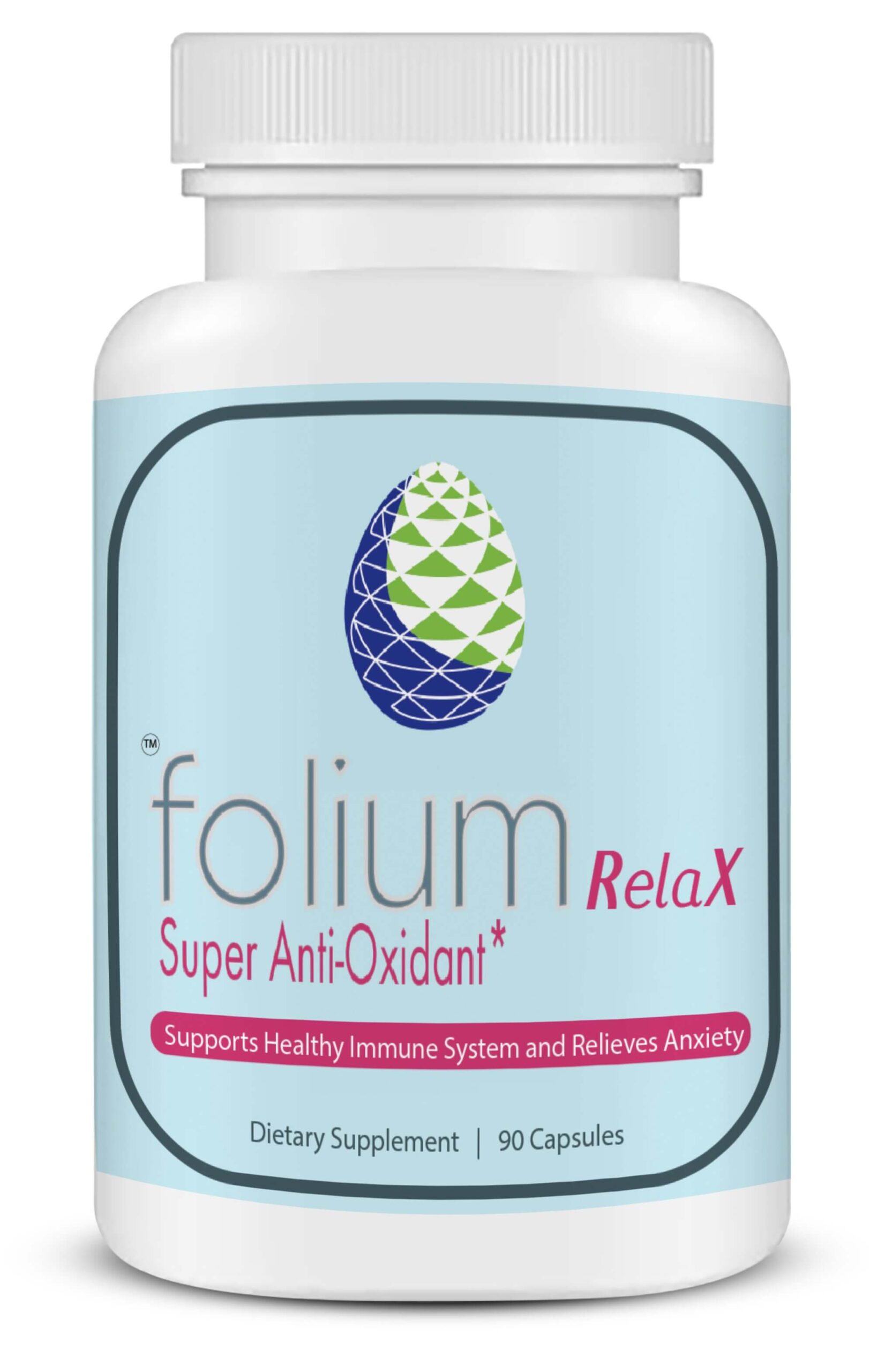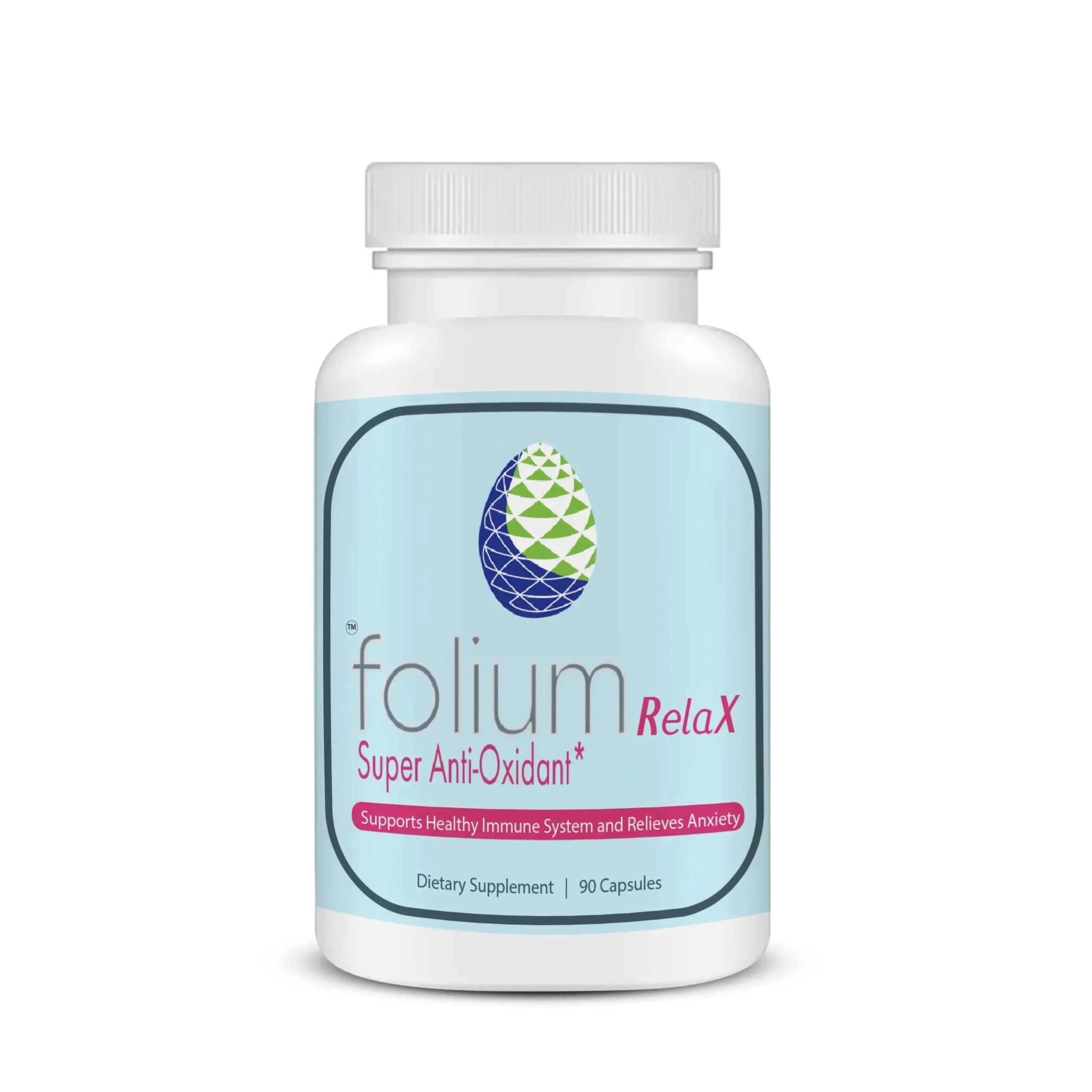Digital devices have become an inseparable part of daily life. From work to entertainment, navigation, and communication, screens dominate our environment. With constant exposure to smartphones, tablets, Wi-Fi routers, and LED lighting comes a growing concern: what are the effects of electromagnetic fields (EMFs) and blue light on long-term health?
Scientific evidence increasingly suggests that prolonged exposure to these elements contributes to oxidative stress, disrupts circadian rhythms, and may impact cognitive performance, mood, and even cellular function. While technology remains indispensable, there is a rising need for counterbalancing this exposure through proactive wellness practices.
At Folium pX, we advocate for harmonizing modern living with optimal health. Our range of antioxidant-rich supplements, developed to support detoxification and immune resilience, is uniquely suited to help the body manage stress from digital environments. In this article, we examine the biological effects of EMFs and blue light and how targeted detoxification can serve as an effective countermeasure.
Key Takeaways
- EMFs and Blue Light Are Silent Stressors
Daily exposure to non-ionizing EMFs and artificial blue light may disrupt circadian rhythms, contribute to oxidative stress, and impact mood, sleep, and cognitive health.
- Digital Overload Is Cumulative
Screen time and ambient device radiation create chronic low-grade stress that gradually overwhelms the body’s natural defenses.
- Oxidative Stress Is the Core Issue
EMFs and blue light elevate free radical activity, leading to cellular damage, inflammation, and accelerated aging—particularly in tech-heavy environments.
- Antioxidants Provide Essential Protection
Folium pX’s plant-based antioxidants help neutralize free radicals, support detox pathways, and enhance the body’s resilience to digital stress.
- Holistic Detox Starts with Daily Habits
Pairing antioxidant support with lifestyle changes—like limiting screen exposure at night, using blue light filters, and improving sleep hygiene—offers a practical path to digital balance.
Your brain flushes out toxins while you sleep.
Blue light exposure at night? It hijacks that detox process.
Screens off. Body on. 🧠💤
Understanding EMFs and Blue Light

What Are EMFs?
Electromagnetic fields (EMFs) are invisible energy waves emitted by electronic devices. They are classified as either ionizing (e.g., X-rays) or non-ionizing (e.g., microwaves, Wi-Fi, mobile phones). While non-ionizing EMFs are generally considered low-frequency and less harmful than ionizing radiation, prolonged and cumulative exposure may still affect biological systems.
Sources of Everyday EMFs:
- Cell phones and tablets
- Wi-Fi routers and Bluetooth devices
- Smart home gadgets
- Laptops and monitors
- Electrical wiring and appliances
What Is Blue Light?
Blue light is part of the visible light spectrum with short wavelengths and high energy. While blue light exists naturally in sunlight, it is also emitted by:
- Smartphones and tablets
- LED and fluorescent lighting
- Computer screens and TVs
Unlike natural sunlight, which shifts in intensity and spectrum throughout the day, artificial blue light is constant and often overexposed, especially during evening hours. This can confuse the brain’s internal clock and disrupt biological processes such as sleep and melatonin production.
Ubiquity of Exposure
The average adult spends over 10 hours per day in front of a screen. Combined with ambient EMFs from Wi-Fi routers and smart devices, the modern body is constantly interacting with low-grade but chronic forms of environmental radiation—digital stressors we rarely consider but cannot ignore.
Health Impacts of EMF Exposure

EMF exposure has been widely studied for its potential biological effects. Although the research remains ongoing, evidence continues to emerge around the subtle yet significant physiological impacts of long-term exposure.
Neurological Symptoms
Some individuals report experiencing symptoms after EMF exposure, commonly referred to as electromagnetic hypersensitivity (EHS). Though not officially recognized as a medical condition, reported symptoms include:
- Chronic headaches
- Brain fog
- Tinnitus
- Mood swings
- Fatigue
These symptoms often occur in high-EMF environments such as office buildings with multiple routers, open floor plans with numerous devices, or densely populated urban centers.
Oxidative Stress and Free Radicals
EMFs may contribute to oxidative stress by interfering with calcium ion signaling and increasing the production of reactive oxygen species (ROS). Elevated ROS levels can damage:
- Cellular membranes
- DNA structure
- Mitochondrial function
This cumulative oxidative damage may accelerate aging, weaken the immune system, and increase susceptibility to inflammation-related conditions.
Circadian Rhythm Disruption
Emerging research links EMF exposure to disruption in the body’s pineal gland, potentially affecting melatonin production. This hormone regulates sleep and circadian rhythms, meaning EMF exposure—especially at night—can impair sleep quality, reduce recovery, and lower detox efficiency.
Regulatory Guidelines
Organizations like the World Health Organization (WHO) and International Commission on Non-Ionizing Radiation Protection (ICNIRP) have set safety limits for EMF exposure. However, most guidelines are based on thermal effects (i.e., tissue heating) and do not yet fully account for chronic low-dose exposure, leaving a gap in long-term protection strategies.
Health Impacts of Blue Light Exposure

Unlike EMFs, blue light is a visual stimulus, yet its effects can be just as biologically disruptive—especially to sleep, mood, and eye health.
Disruption of Sleep Cycles
Melatonin is a hormone released by the pineal gland in response to darkness, signaling the body to prepare for sleep. Blue light from screens suppresses melatonin production, leading to:
- Difficulty falling asleep
- Lighter, fragmented sleep
- Reduced REM cycles
Sleep is one of the body’s most critical detox functions, during which the brain’s glymphatic system flushes out cellular waste and neurotoxins. Blue light exposure at night effectively short-circuits this cleaning process.
Digital Eye Strain
Extended exposure to screens often results in Computer Vision Syndrome, characterized by:
- Blurred vision
- Dry or itchy eyes
- Headaches
- Difficulty focusing
High-energy visible (HEV) blue light penetrates the retina more deeply than other wavelengths, raising concerns about long-term retinal health, particularly in environments with minimal natural light.
Psychological and Neurological Effects
Preliminary studies suggest a link between excessive screen time and mental health conditions such as anxiety, depression, and attention deficits. Whether it’s the result of disrupted sleep, constant notifications, or dopamine feedback loops, screen-related stress is undeniably tied to blue light and digital overload.
The Invisible Compound Effect
While neither EMFs nor blue light are acutely toxic in small doses, their chronic, cumulative nature presents a modern challenge. Unlike food or air toxins, there’s no escape from digital exposure in contemporary life—only strategies for management and mitigation.
The Role of Antioxidants in Combating Digital Stress
Digital overload doesn’t always produce visible symptoms. Instead, it often triggers microscopic shifts in the body’s internal balance—chief among them, oxidative stress. This occurs when the body’s antioxidant defenses are outpaced by free radical production.
Free Radicals and Digital Exposure
Free radicals are unstable molecules that damage cells by stealing electrons. EMFs and blue light increase free radical activity by:
- Agitating cell membranes
- Disrupting calcium ion channels
- Suppressing melatonin (a natural antioxidant)
Without sufficient antioxidant support, this imbalance can harm mitochondria—the energy centers of your cells—and initiate low-grade, systemic inflammation.
Antioxidants to the Rescue
Antioxidants stabilize free radicals by donating electrons without becoming unstable themselves. The body produces some antioxidants endogenously, but exogenous support through food and supplements is essential, particularly in high-stress environments.
Key Natural Antioxidants:
- Vitamin C and E
- Polyphenols (from grapes, berries)
- Flavonoids (from citrus, pine bark)
- Proanthocyanidins (from grape seed extract)
Folium pX: Supporting Digital Detoxification

Folium pX was developed to support full-body detoxification from environmental stressors—including those imposed by modern digital life. Its proprietary formula includes powerful plant-based antioxidants designed to neutralize free radicals and enhance detox pathways.
What’s Inside Folium pX?
- Pine Bark Extract: A rich source of oligomeric proanthocyanidins (OPCs), which protect against oxidative damage and support vascular function.
- Grape Seed Extract: Enhances blood circulation and supports collagen integrity while acting as a potent free radical scavenger.
- Additional Botanicals: Synergistically included to assist the liver, kidneys, and lymphatic system in managing detox load.
How It Works
Folium pX supports digital detox by:
- Protecting DNA from oxidative damage
- Supporting liver enzymatic pathways
- Improving microcirculation, enhancing cellular oxygenation
- Reducing inflammation related to EMF-induced stress
Its effects are particularly relevant for individuals in high-exposure environments such as office workers, content creators, or anyone reliant on multiple connected devices throughout the day.
Recommended Use
- Dosage: Three 450 mg capsules, three times daily
- Timing: 15–30 minutes before meals
- Duration: Recommended in alternating 30-day periods for up to 6 months
Folium pX does not block EMFs or blue light. Instead, it fortifies the body’s natural defenses against their internal effects.
Complementary Strategies for Digital Detox

Supplements like Folium pX offer foundational support, but lifestyle adjustments can compound their benefits.
Simple Digital Detox Habits
- Use Blue Light Filters: Apply screen filters or enable night mode on devices after 7 p.m.
- Create Tech-Free Zones: Keep bedrooms and meal areas screen-free to enhance sleep and presence.
- Take Microbreaks: Follow the 20-20-20 rule: Every 20 minutes, look 20 feet away for 20 seconds.
- Limit Wi-Fi Exposure: Turn off routers at night and avoid sleeping near electronic devices.
Sleep Support with Folium Relax
Folium Relax complements digital detox by promoting quality sleep—essential for neurological cleansing. It contains:
- Valerian Root: Reduces nervous tension
- L-Theanine: Promotes relaxation without sedation
- Passionflower & Chamomile: Traditional herbs for soothing the mind
Inflammation Support with Folium Immuno
Chronic inflammation can be exacerbated by poor sleep and oxidative stress. Folium Immuno helps regulate inflammation with:
- Turmeric and Ginger: Natural anti-inflammatories
- Pomegranate and Green Tea: Rich in polyphenols
- Mustard and White Pepper: Enhancers for absorption and circulation
Together, these three Folium formulations support a resilient, adaptable body ready to face modern stressors.
Creating a Personalized Digital Detox Plan
Creating a digital detox routine doesn’t mean cutting off technology—it means using it more consciously.
Step 1: Audit Your Digital Exposure
- How many hours per day do you spend on screens?
- Do you sleep with your phone next to your bed?
- Are you experiencing symptoms like eye strain or sleep difficulty?
Step 2: Set Boundaries
- Limit screen time to essential tasks
- Schedule non-digital breaks
- Turn off notifications to reduce dopamine addiction loops
Step 3: Integrate Folium Support
- Morning: Take Folium pX and Folium Immuno 30 minutes before breakfast
- Evening: Take Folium Relax an hour before bed
- Stay hydrated and eat antioxidant-rich foods to amplify the effects
Sample Daily Routine
| Time | Activity |
| 7:30 AM | Wake up + Lemon water |
| 8:00 AM | Take Folium pX + Immuno |
| 9:00 AM | Begin work, screen timer ON |
| 12:30 PM | Walk outdoors + screen break |
| 7:00 PM | Turn on night mode on all screens |
| 9:00 PM | Take Folium Relax |
| 10:00 PM | Lights out—no screens in bed |
Consistency is key. These small steps can result in long-term benefits when practiced daily.
Conclusion: Digital detox
Digital living is here to stay—but so is your power to stay balanced. EMFs and blue light may not cause immediate harm, but their persistent, cumulative presence challenges the body’s ability to stay in equilibrium. From disrupted sleep and eye strain to cellular inflammation and oxidative stress, the impact is real—and manageable.
By supporting your body with scientifically formulated supplements like Folium pX, Folium Immuno, and Folium Relax, you build an internal shield against digital toxicity. Combined with intentional lifestyle practices, you create a buffer zone between yourself and the digital noise of modern life.
Your devices may be smart—but your health choices can be smarter. Choose to detox, reset, and strengthen with Folium pX.
Support your body’s natural defenses against digital stress—explore the full range of antioxidant-rich supplements!
Further Reading
- Global Rise of Potential Health Hazards Caused by Blue Light-Induced Circadian Disruption: This article explores the increasing health risks associated with blue light exposure, particularly its impact on circadian rhythms and potential links to various health disorders.
- Even Low Light Before Bed Can Disrupt Sleep-Hormone Cycles: This study demonstrates how exposure to low levels of light before bedtime can significantly suppress melatonin production, affecting sleep quality and circadian rhythms.






